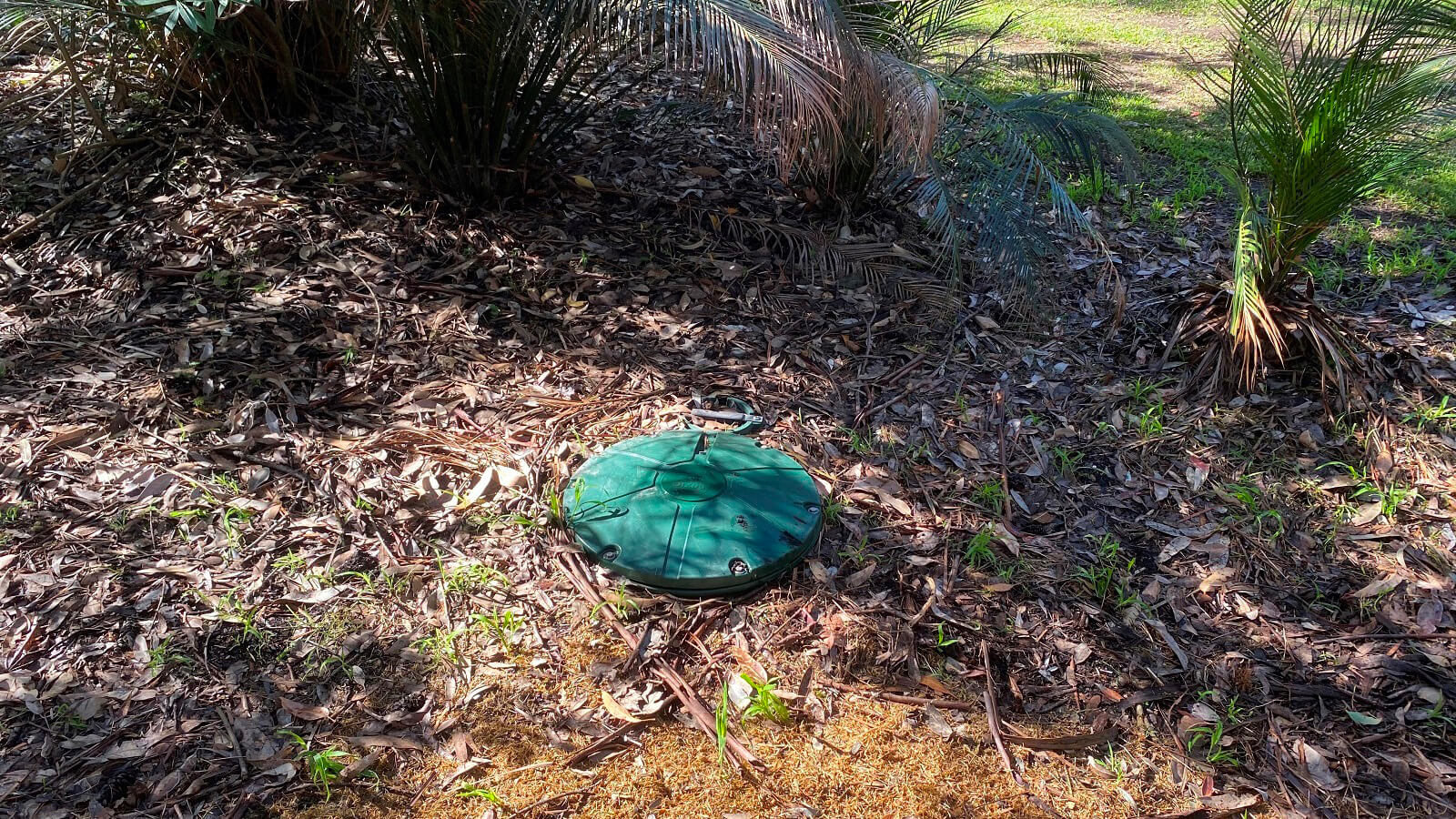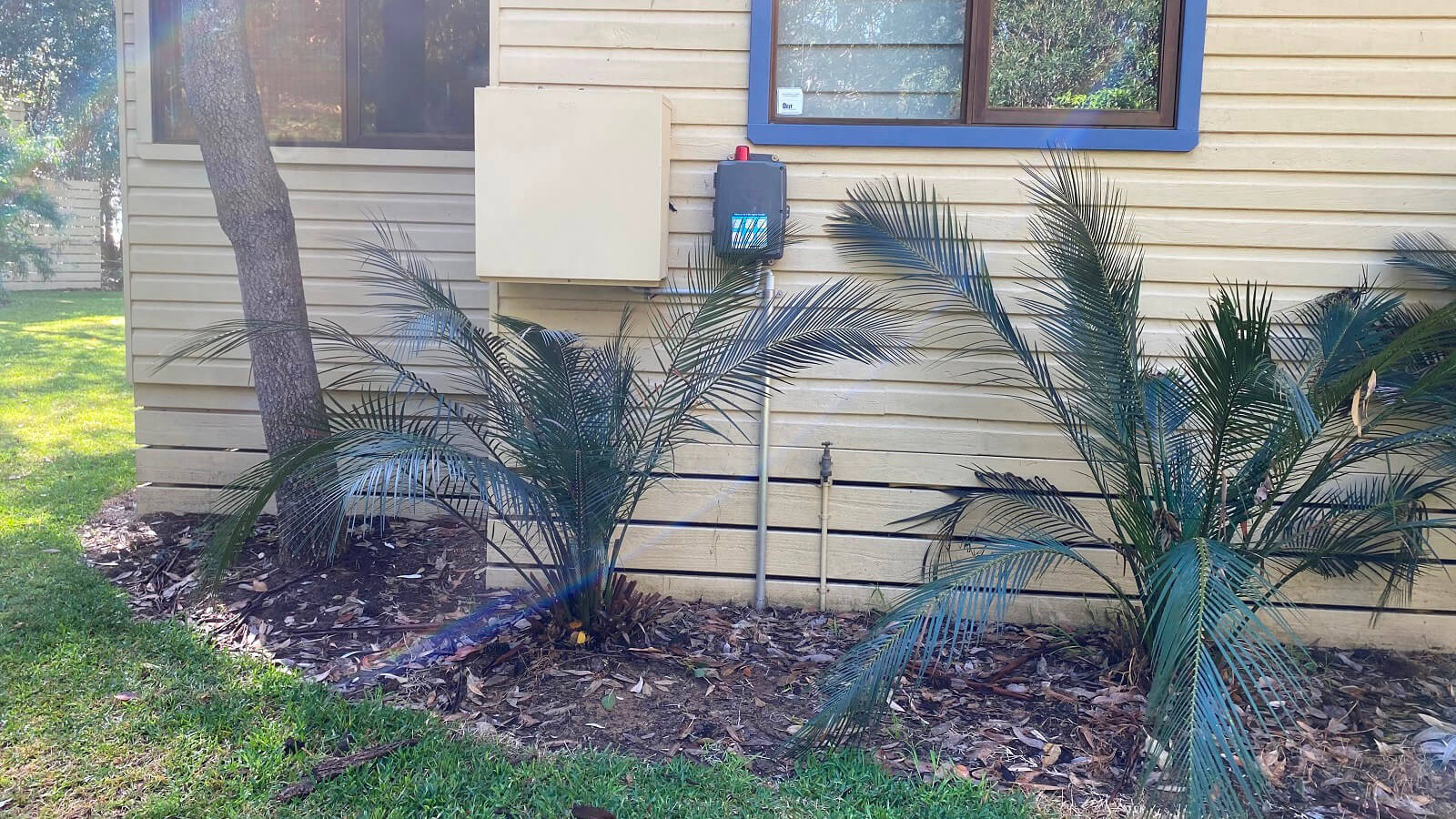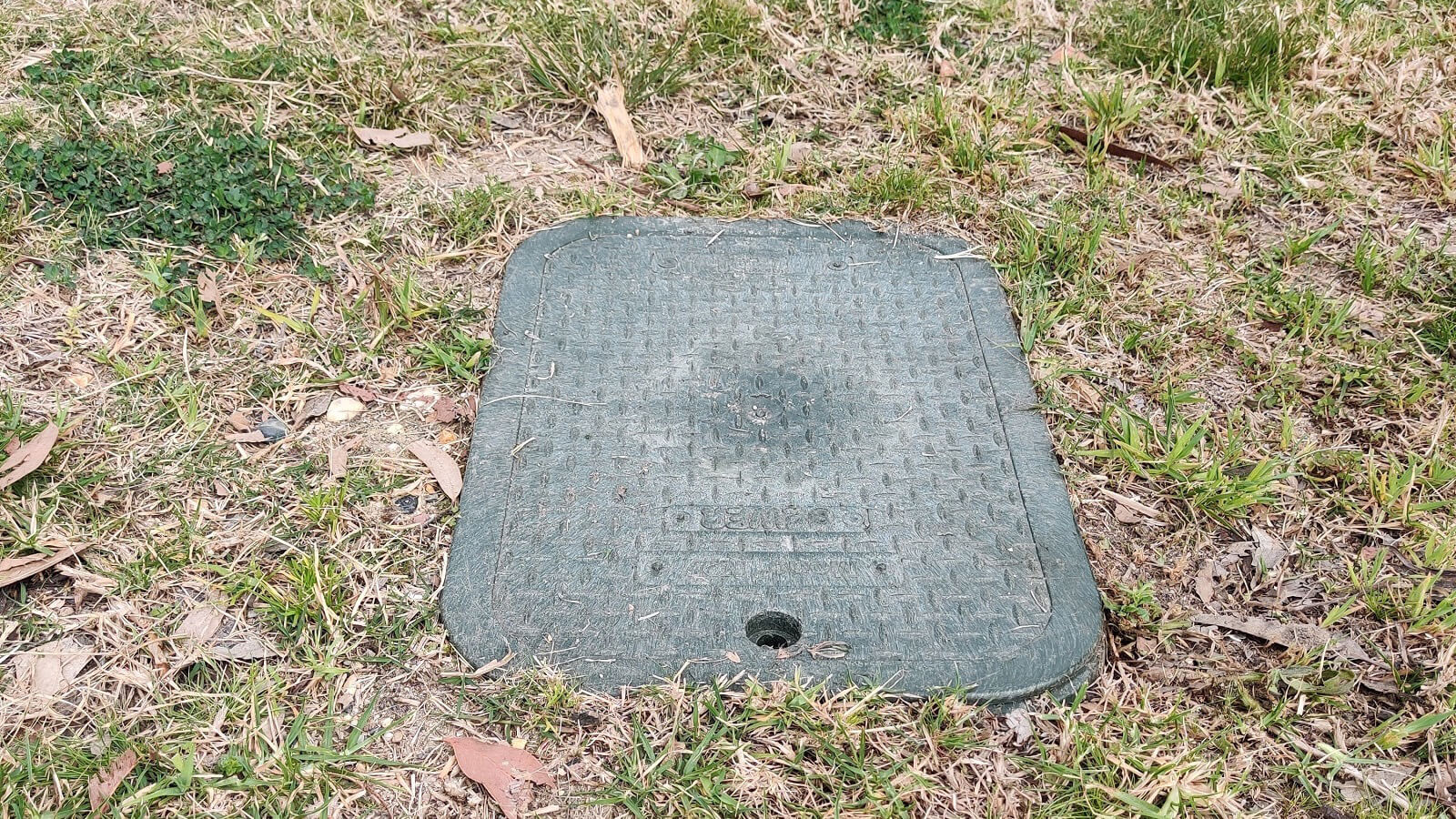Pressure sewerage systems
A pressure sewerage system is a network of infrastructure used to pump sewage from individual properties into street mains and on to treatment plants. They are particularly beneficial on small residential properties where on-site sewage management systems, such as septic tanks, can pose environmental and health risks.
Pressure sewerage systems are often used in place of traditional gravity-fed systems due to reduced installation costs as well as environmental and social impacts. The small diameter pipes are installed at a shallow depth requiring minimal site disturbance. Alternatively, pipes can be installed using horizontal drilling technology, avoiding lengthy excavations through residential areas.
Pressure sewerage systems now operate in Rosedale, Guerilla Bay, Bodalla, Potato Point, Akolele and Nelligen.
Pressure sewerage system parts
There are four main parts of a pressure sewerage system.
1. Collection tank and pump unit
A below-ground tank collects household sewage in the same way a septic tank does. A pressure sewage system tank contains a pump that grinds up solids and pumps the waste through small diameter pipes to the street mains.
The pump activates automatically when the tank's contents reach a certain level. This level is set quite low to ensure there is approximately 24 hours storage capacity in the event of a power failure.
The collection tank is installed around 2m deep and is buried underground with just the 1m diameter lid above ground level. Clear access to the top of the unit at all times allows for maintenance and repairs.

2. Pump control panel
The pump control panel is a small box containing the electrical controls. It is connected to the property’s electrical switchboard via a dedicated power circuit and is typically mounted on an exterior wall.
The control panel has a visual and an audible alarm in case of system failure. The alarm can be silenced using the mute button on the control panel.
Our on-call sewer operators are available all hours for urgent assistance by phoning 4474 1000.

3. Discharge pipe
Sewage is discharged from the collection tank to the street mains via a 40mm plastic poly pipe. Unlike typical gravity sewage pipes, the discharge pipe does not need to flow downhill as it is a fully sealed pressurised system. In fact, a discharge pipe can be installed uphill to the street mains.
4. Boundary kit
A boundary kit is a small box installed below ground just inside a property boundary. It has a flat lid that sits flush with the ground. The discharge pipe passes through the boundary kit transferring sewage from the property into the street mains.
The kit contains a non-return valve to ensure sewage can only travel in the one direction and an isolation valve for maintenance purposes. Only trained Council staff can operate these valves.

Ownership and responsibility
In villages where we has provided a pressure sewer system, ownership and maintenance of the infrastructure will remain Council’s responsibility.
Council is responsible for maintaining:
- the collection tank and pump
- pump control panel
- the discharge pipe
- the boundary kit.
Property owners are responsible for maintaining:
- the pipes that transfer sewage from the house to the collection tank
- the power supply to the pump control panel.
Ongoing costs
Once the scheme is operating, the following costs to property owners will be ongoing:
- Council's annual standard sewer rate
- electrical running costs, approximately $50 per year
Questions about pressure sewerage systems
What happens if there is a power failure or blackout?
You can still use water during a power outage, but reduce the amount of water that goes into your system by limiting toilet flushing and not using the washing machine. There is approximately 24 hours storage capacity in the tank. When the power is restored, the pump will start and the level will quickly return to normal. During extended power outages, we will provide power to the system from a portable source.
What happens if the alarm goes off?
The alarm can be silenced by pressing the button on the pump control panel. If your unit has had a short-term build-up of sewage it will automatically clear itself and the alarm light should go off within an hour. If the light remains on, phone us on 02 4474 1000 and a trained operator will attend as soon as possible. Only Council operators are permitted to repair the system.
Property owners are responsible for ensuring easy and safe access to the pump unit at all times. Pot plants, play equipment, cars, boats or trailers should not be keep on top of the collection tank.
Will it be smelly or noisy?
The unit is below ground, so the pump is pretty quiet. It doesn’t operate all the time, just when the sewage reaches a set level. The unit has air vents to avoid odour problems.
Can I divert my stormwater to my new system?
The pump units are not designed to handle rainwater.
If rainwater were to enter the collection tank the alarm would activate and the pump unit may overflow.
What shouldn’t go down my drains and toilets?
Many items can damage and block the pressure sewerage system. Property owners will be charged the cost of repairs if any of the following items enter the system:
- nappies, wet wipes, paper towel, sanitary napkins or tampons
- solid materials such as glass, metal, shells, rags, clothes, plastic, seafood
- cooking oils and fats
- chemicals (other than those chemicals used in normal domestic cleaning products)
- paint
- gravel, rocks or sand, aquarium stones or kitty litter
- lubricating oil or grease, petrol, diesel, flammable materials and explosives
- stormwater runoff
I have a swimming pool. Will this affect my pressure sewerage system?
If you have a pool or spa or want to install one, contact us to get advice. Due to the high discharge rate of swimming pool pumps, it is important that you contact your plumber to ensure you have a system that reduces the discharge rate to less than 0.5 litres per second. Otherwise, this could cause major damage to the pump unit, and the property owner will be liable.
What if I want to make extensions to my house, build a shed, or install a swimming pool?
Your discharge pipe (the one connecting your boundary kit to the collection tank) can be moved to allow for development at your cost. Phone our Development Helpdesk on 02 4474 1000 before building. Structures cannot be built over the pump unit or the discharge pipe.
Can I put a garden around or over the system?
You can grow plants above the discharge pipe, however they may need to be removed if the pipe is damaged. Plants can be grown around the collection tank and boundary kit but best to make sure they are still accessible.
Can I put a temporary structure, garden shed or park my car over the collection tank?
Structures cannot be built over the collection tank. Refer to our Build in the Vicinity of Sewer Mains policy if you plan to construct a building near the discharge pipe and phone our Development Helpdesk on 02 4474 1000.
Property owners are responsible for ensuring easy and safe access to the collection tank at all times. That means no play equipment, cars, boats, or trailers are to be located over the unit, and please keep the cover free of pot plants and ornaments.
What happens to my old system?
The property owner is responsible for disconnecting, emptying and demolishing the old septic system. You can learn about your options by reading NSW Health Advisory Note 3.
Contact us
For further details about pressure sewerage systems contact our Water and Sewer Projects Engineer, Harvey Lane:
- T: 02 4474 1000
- E: Council

